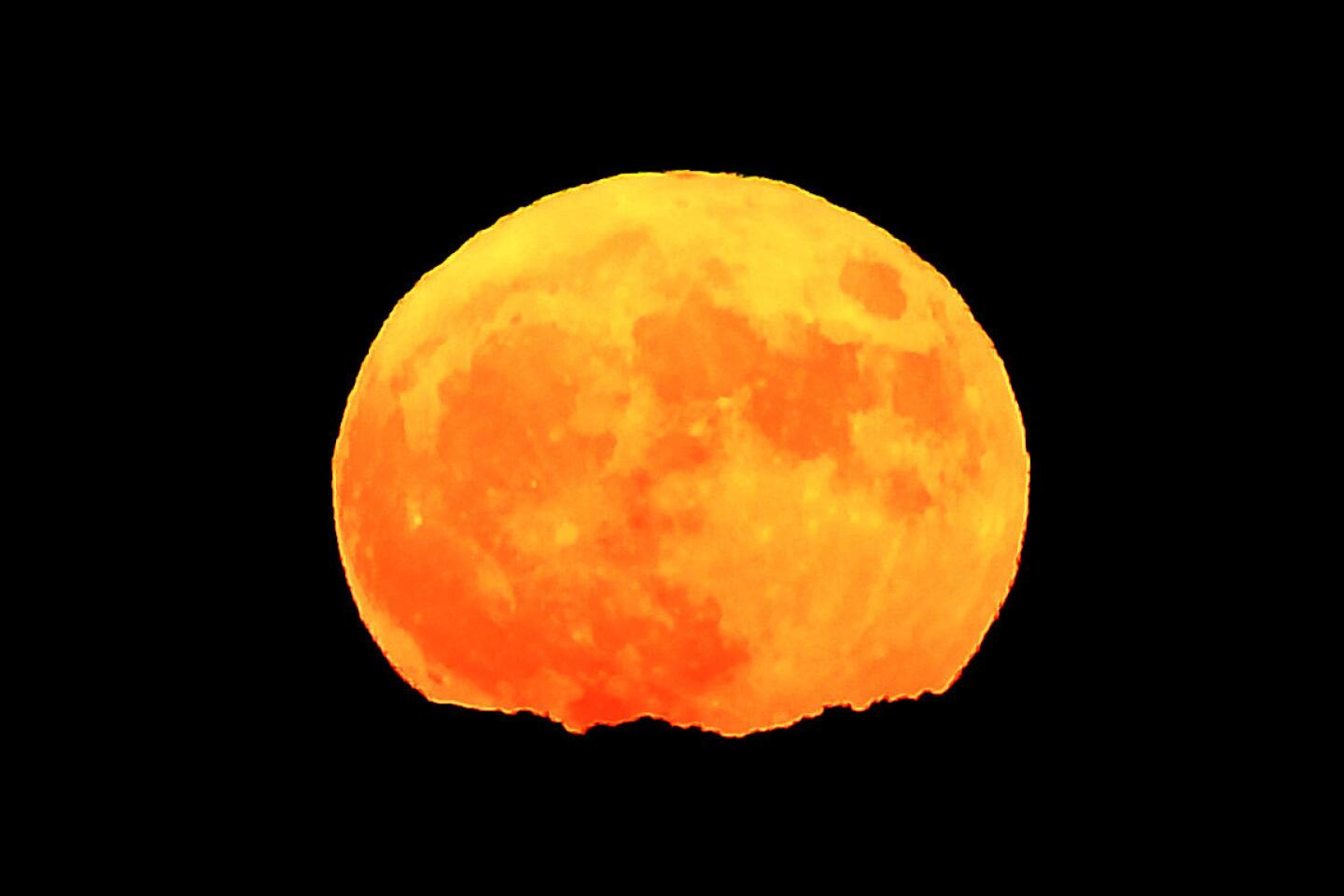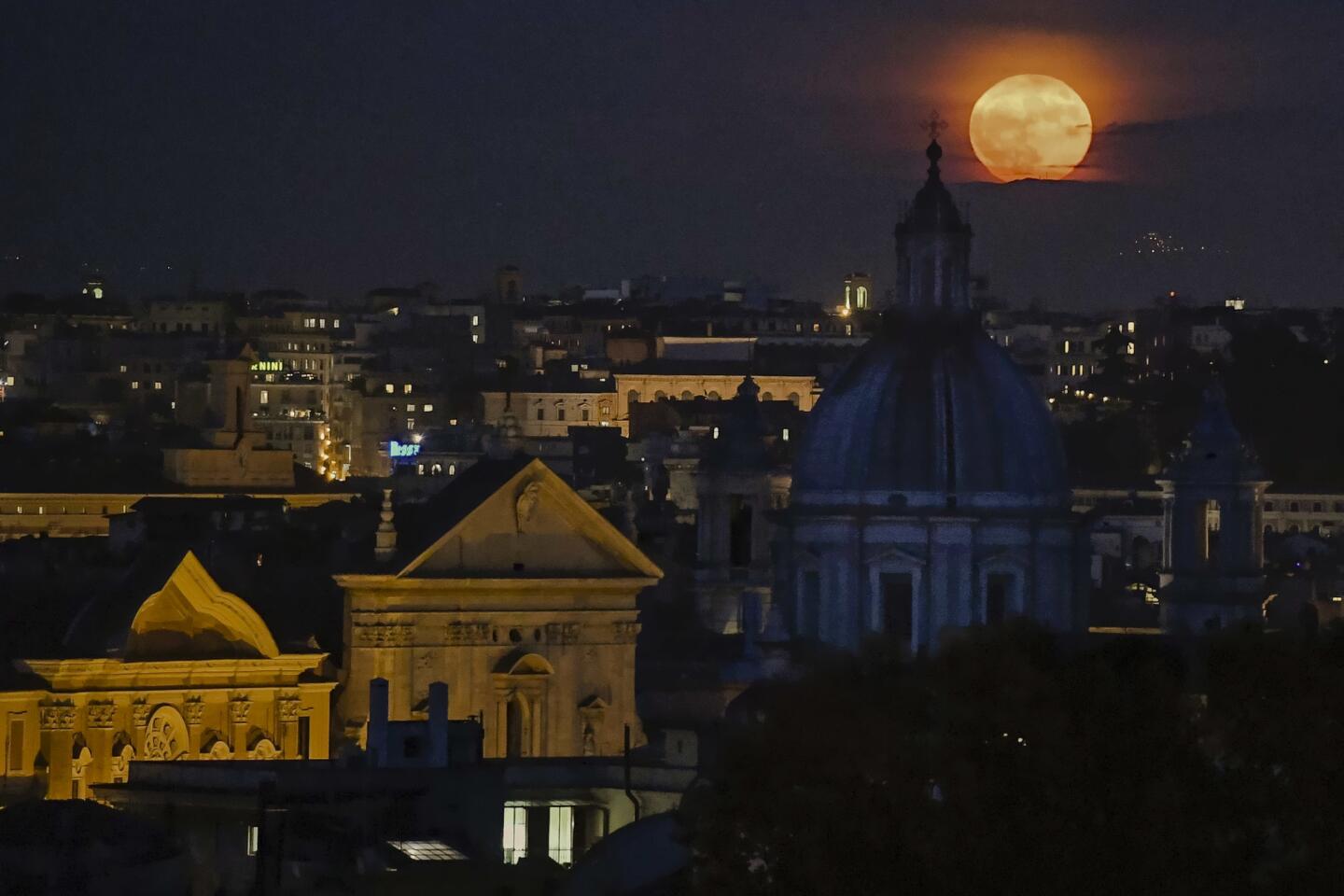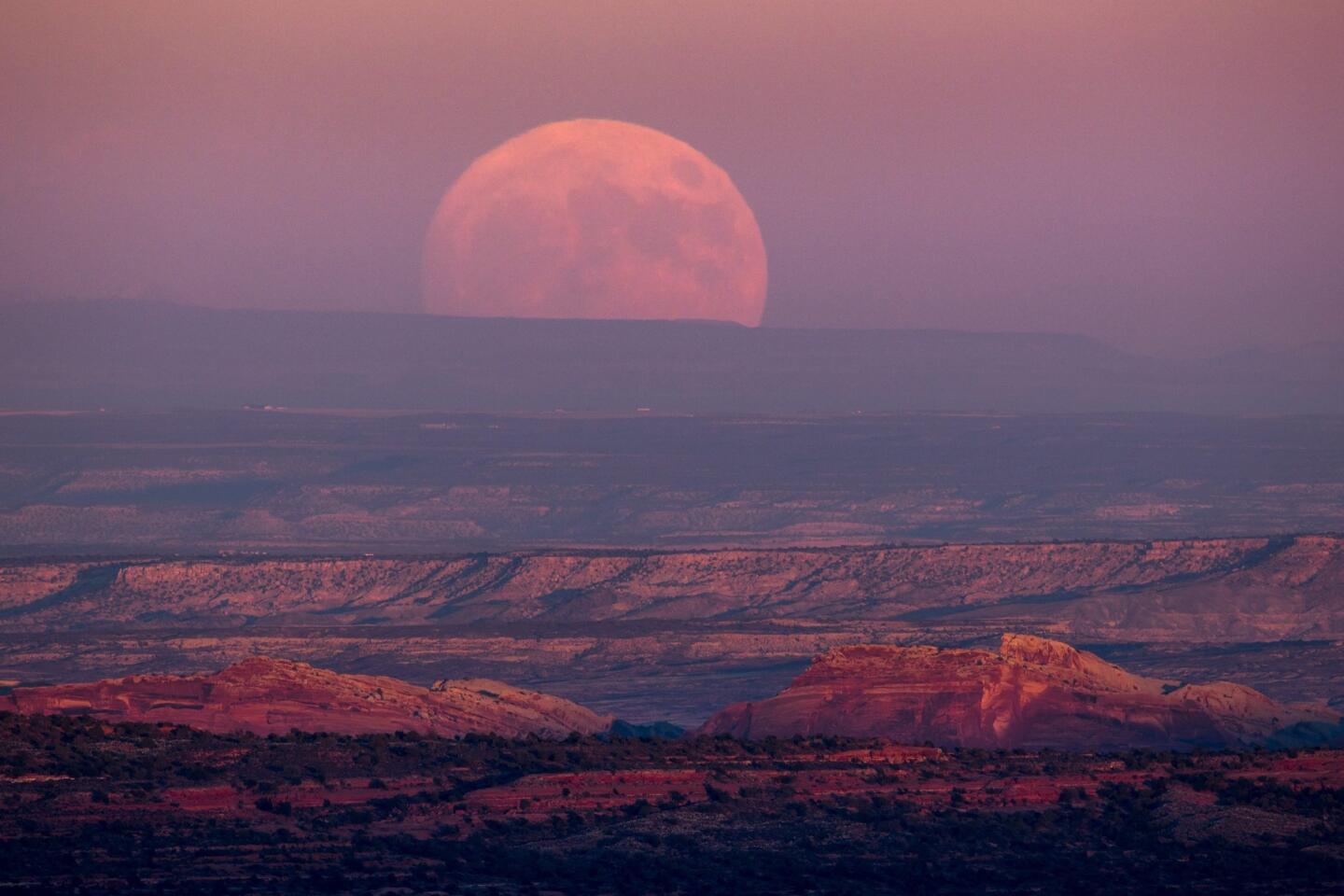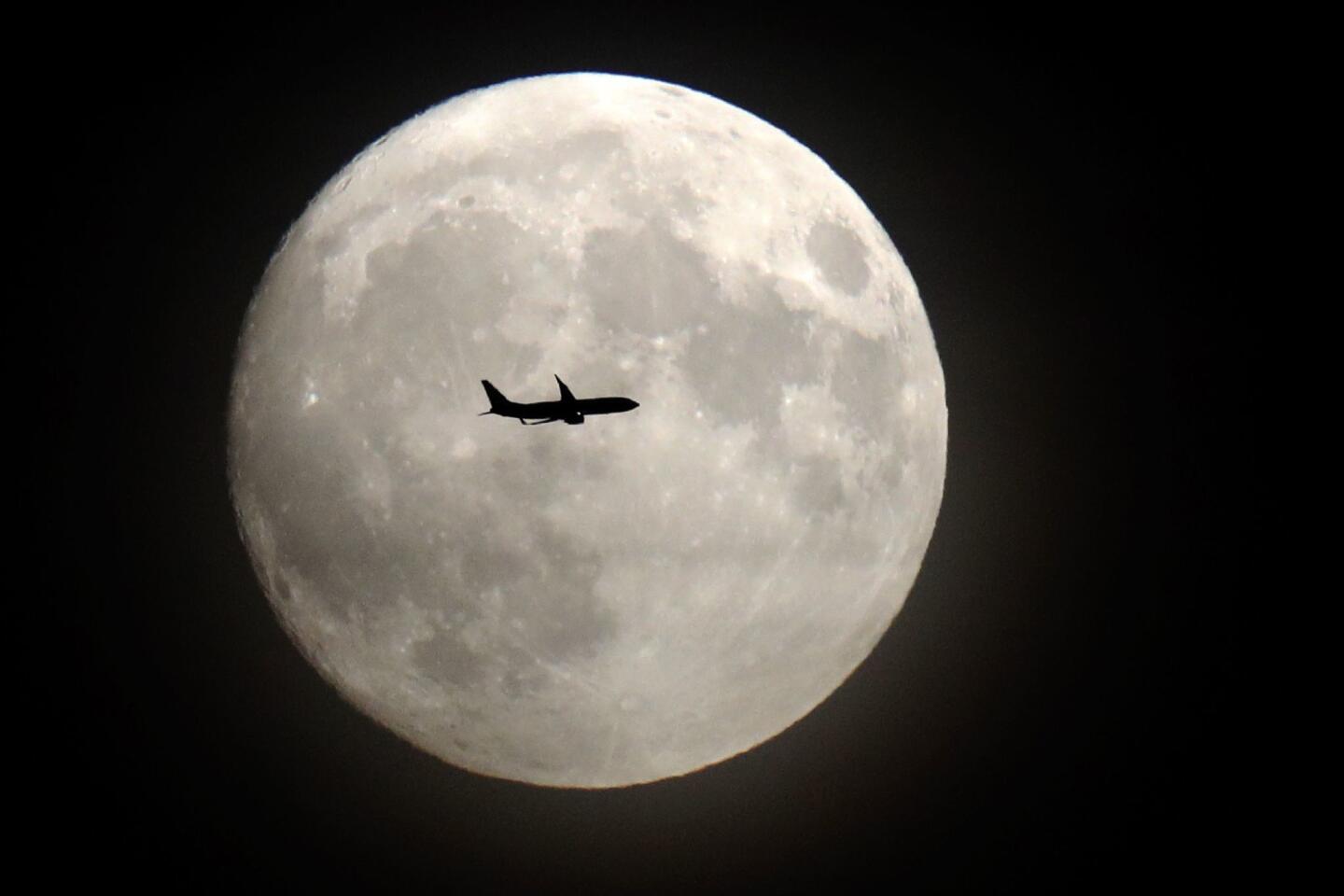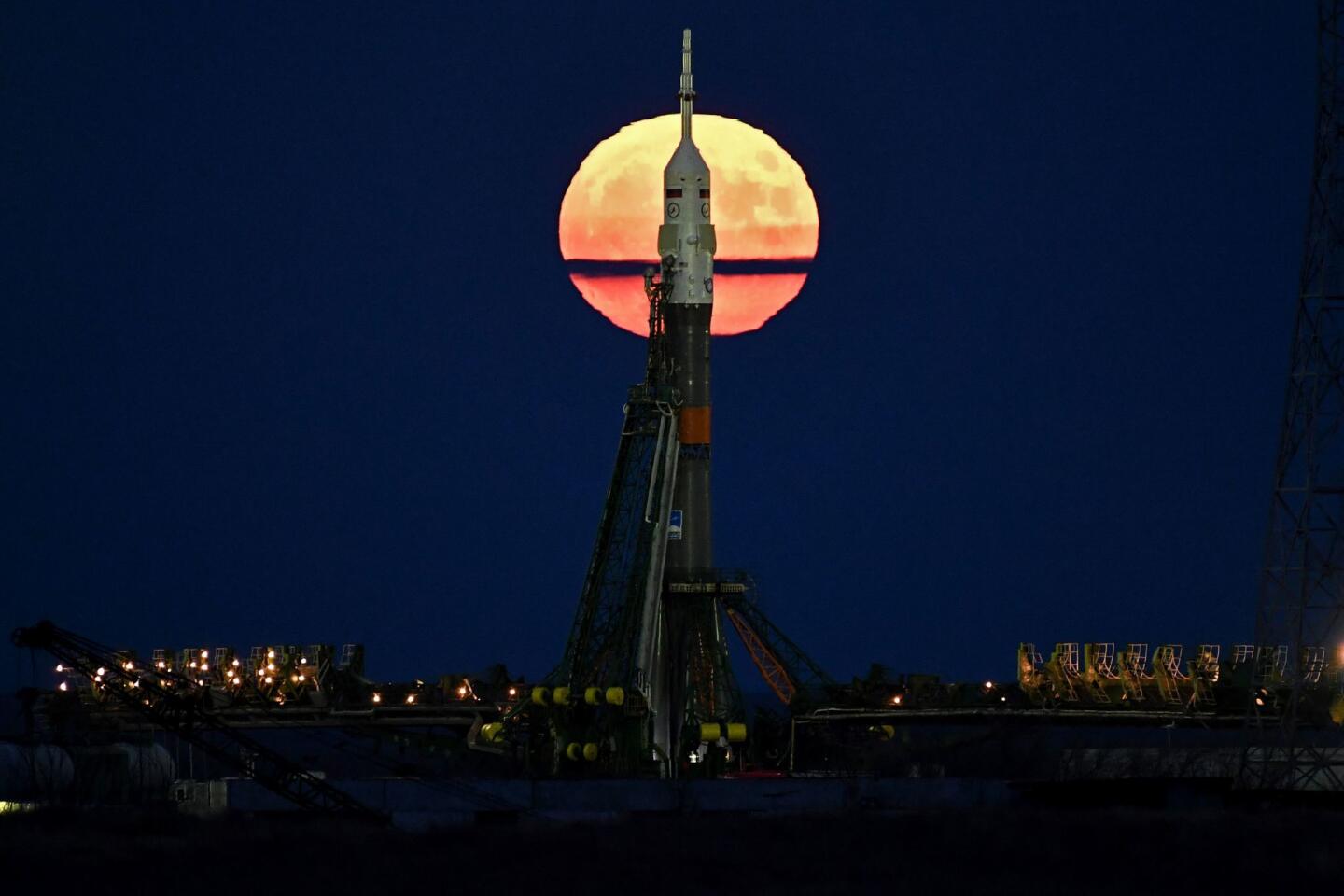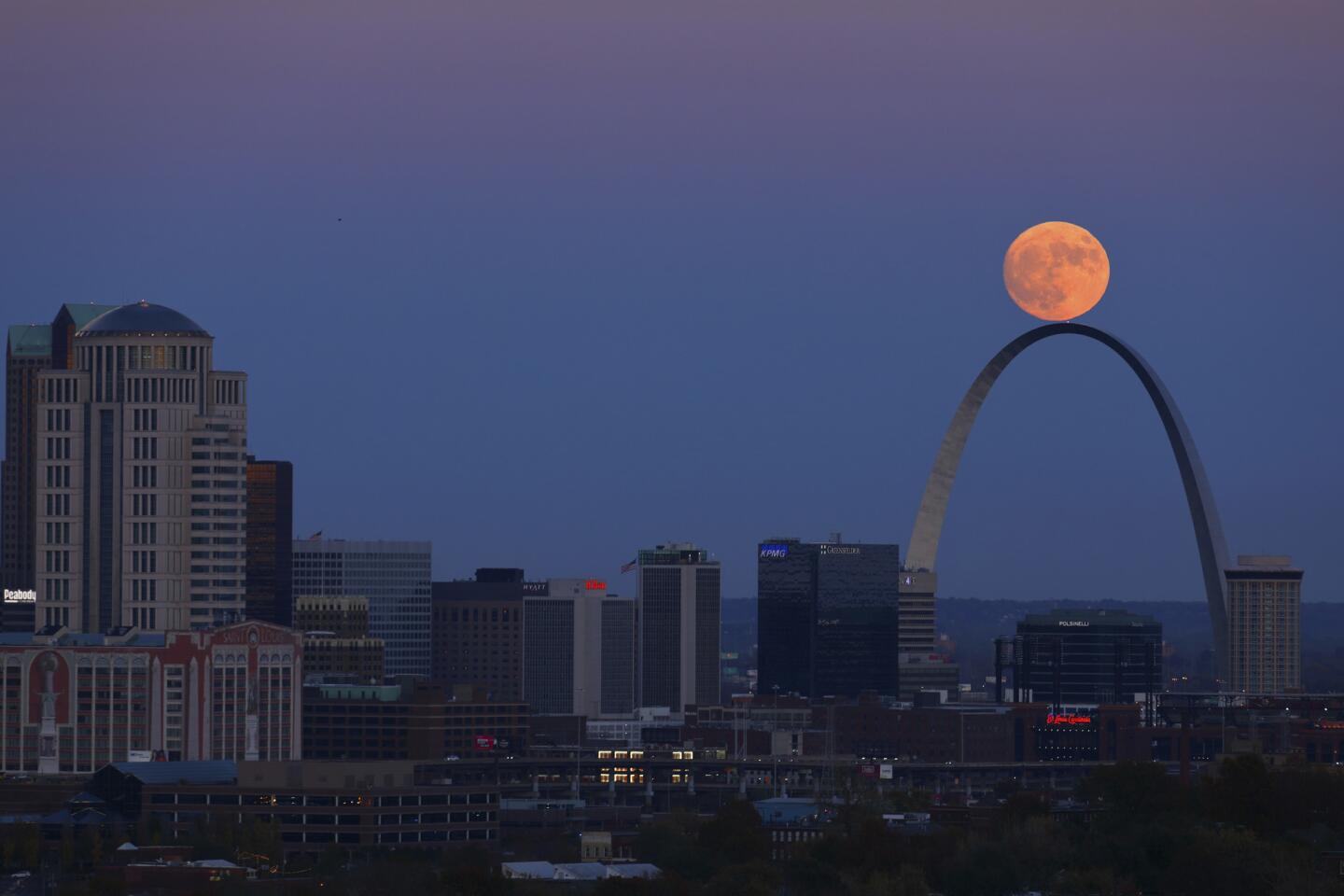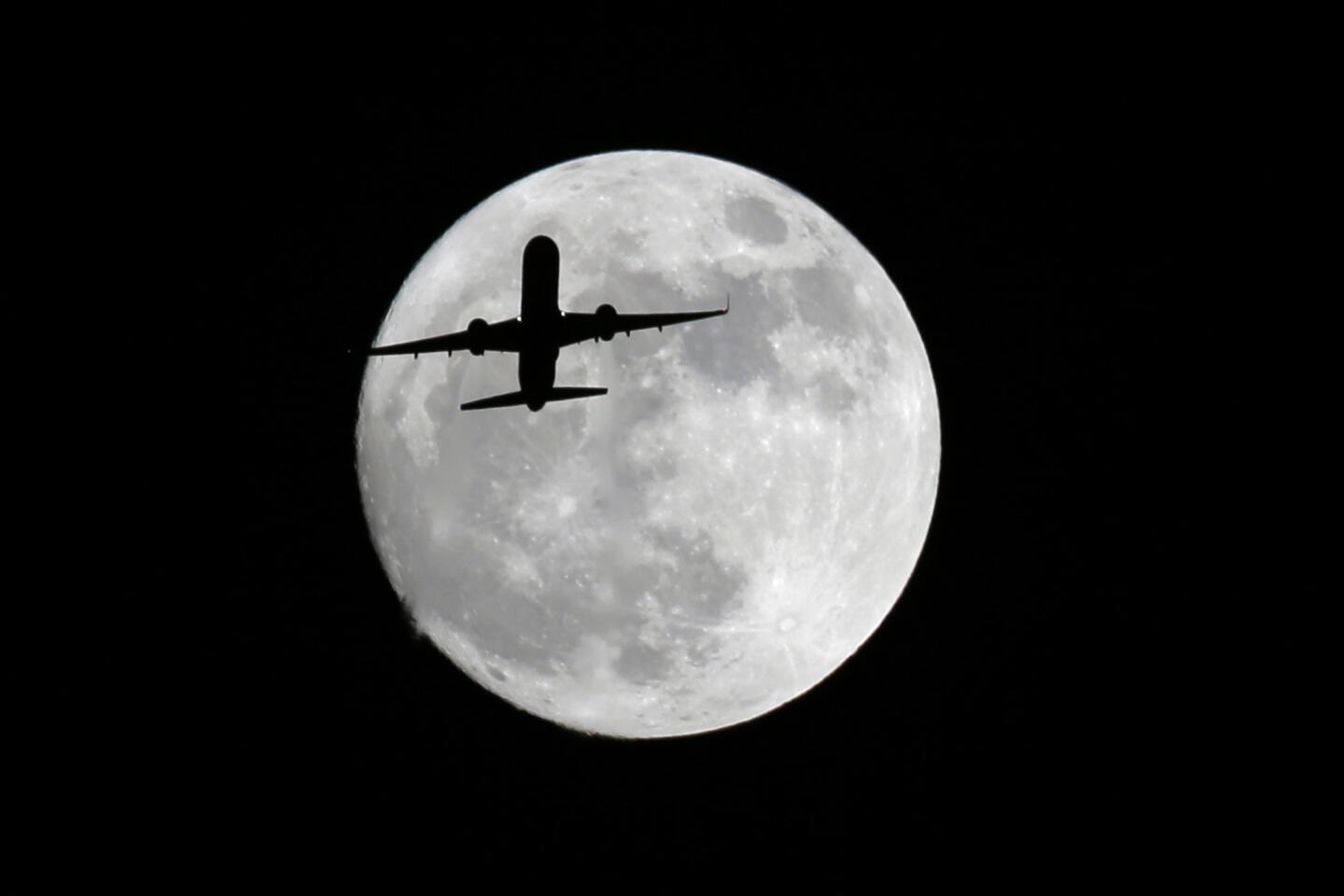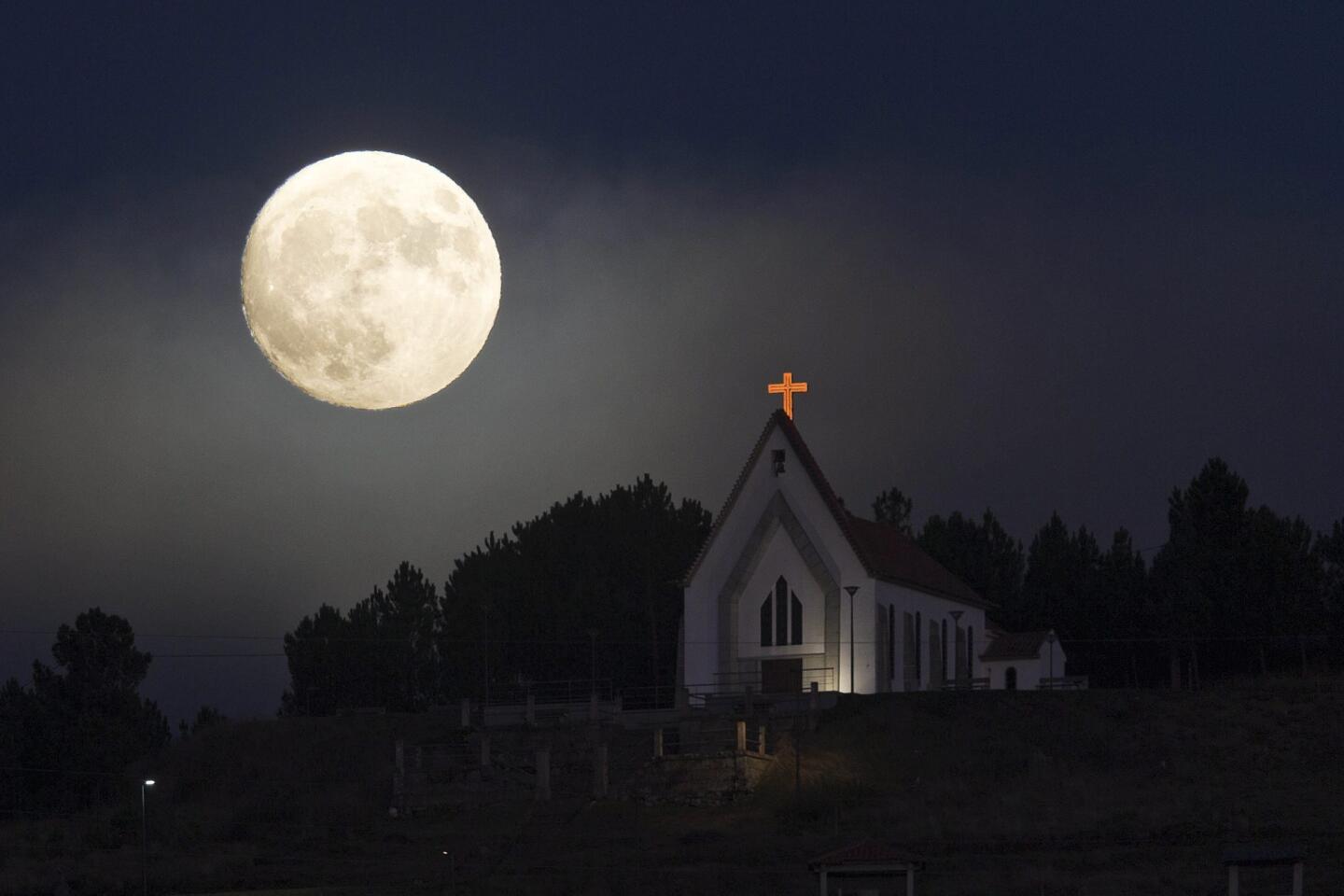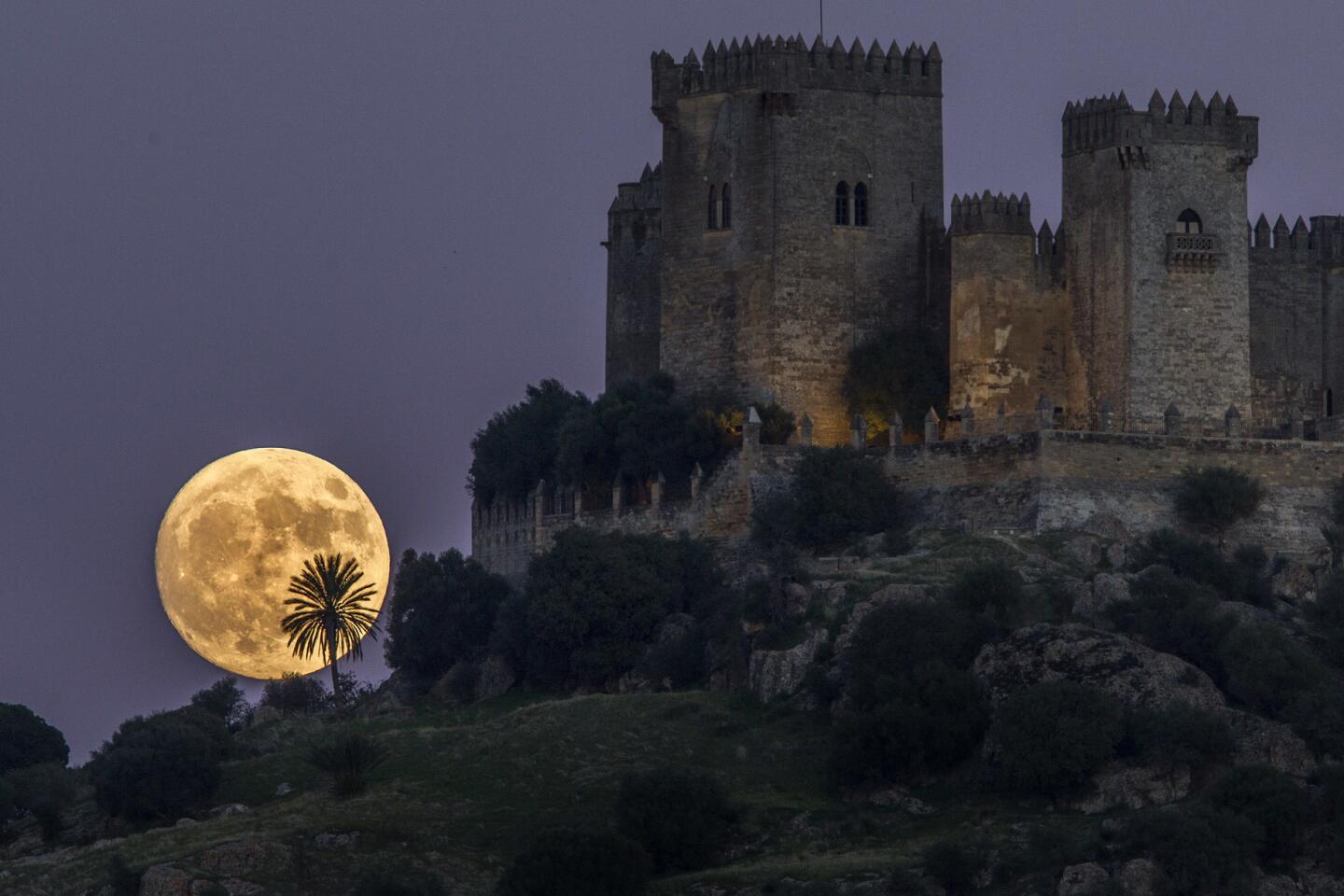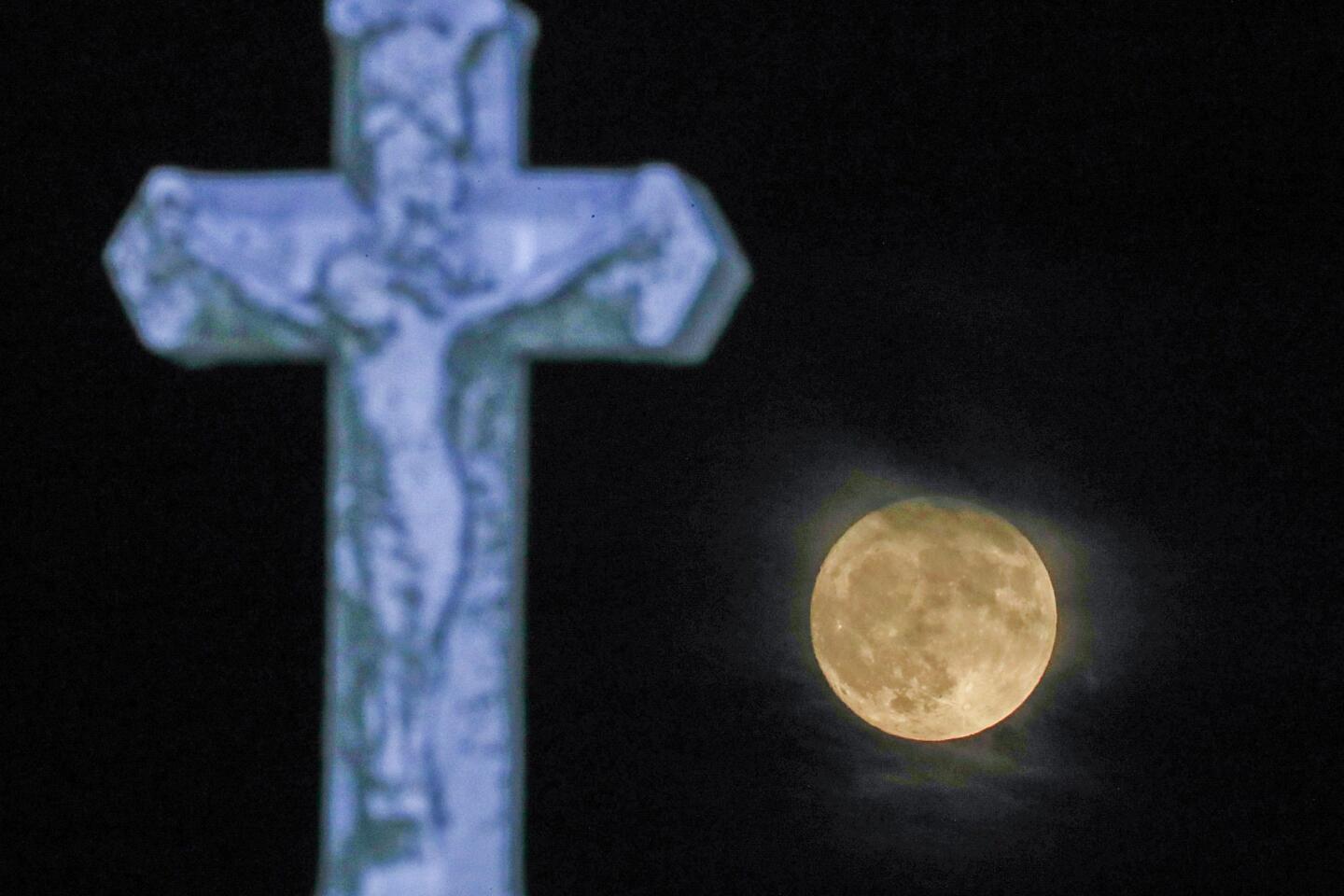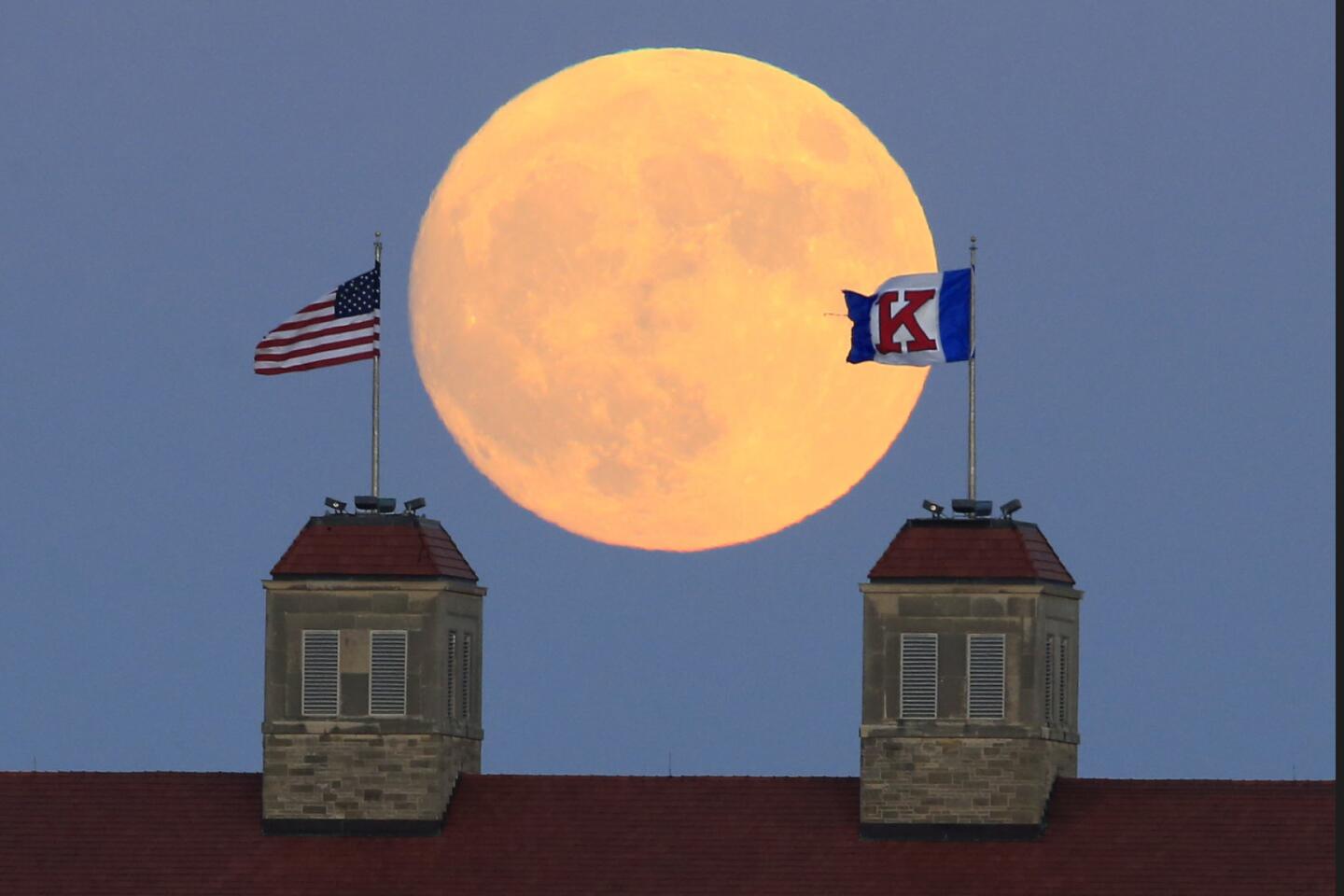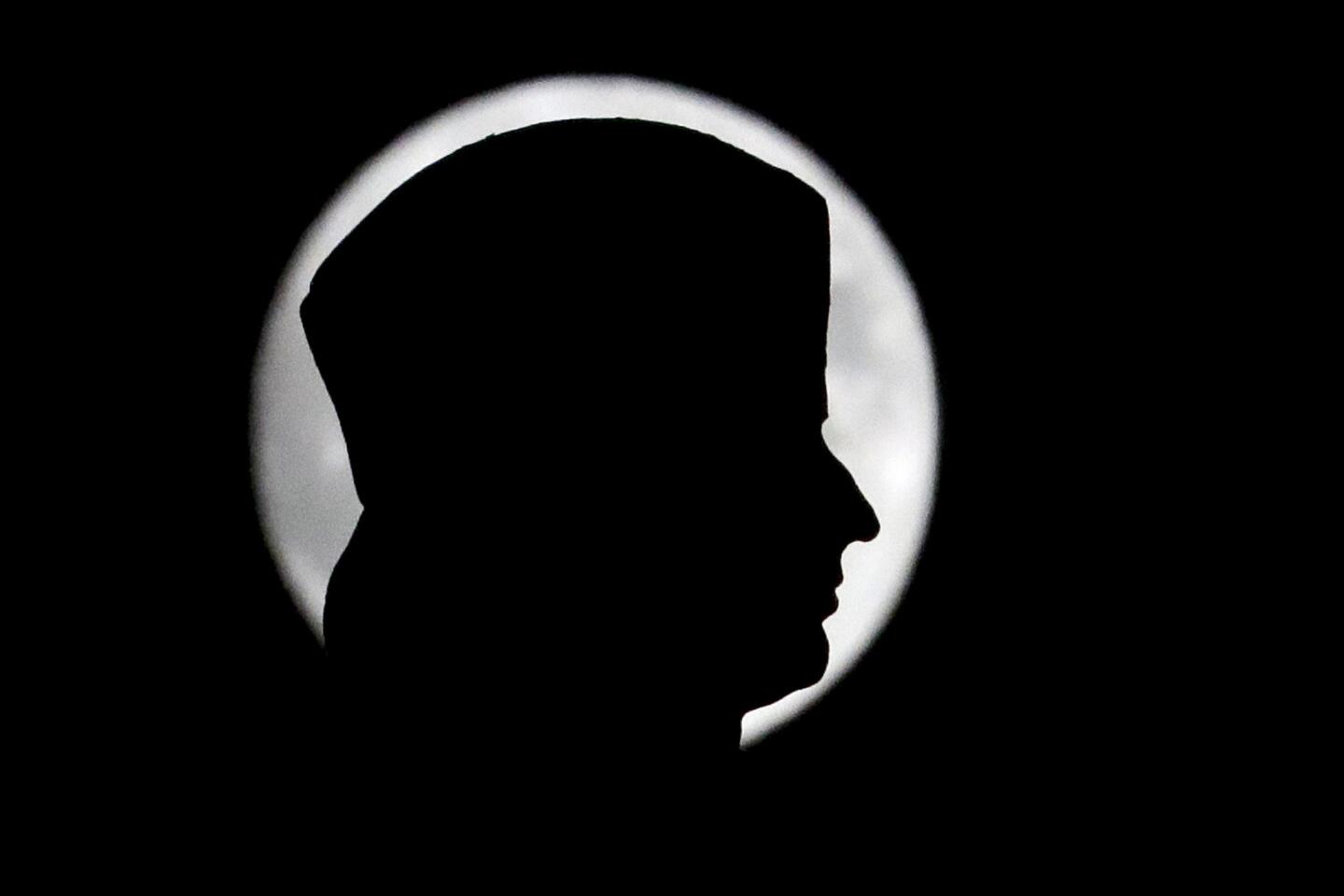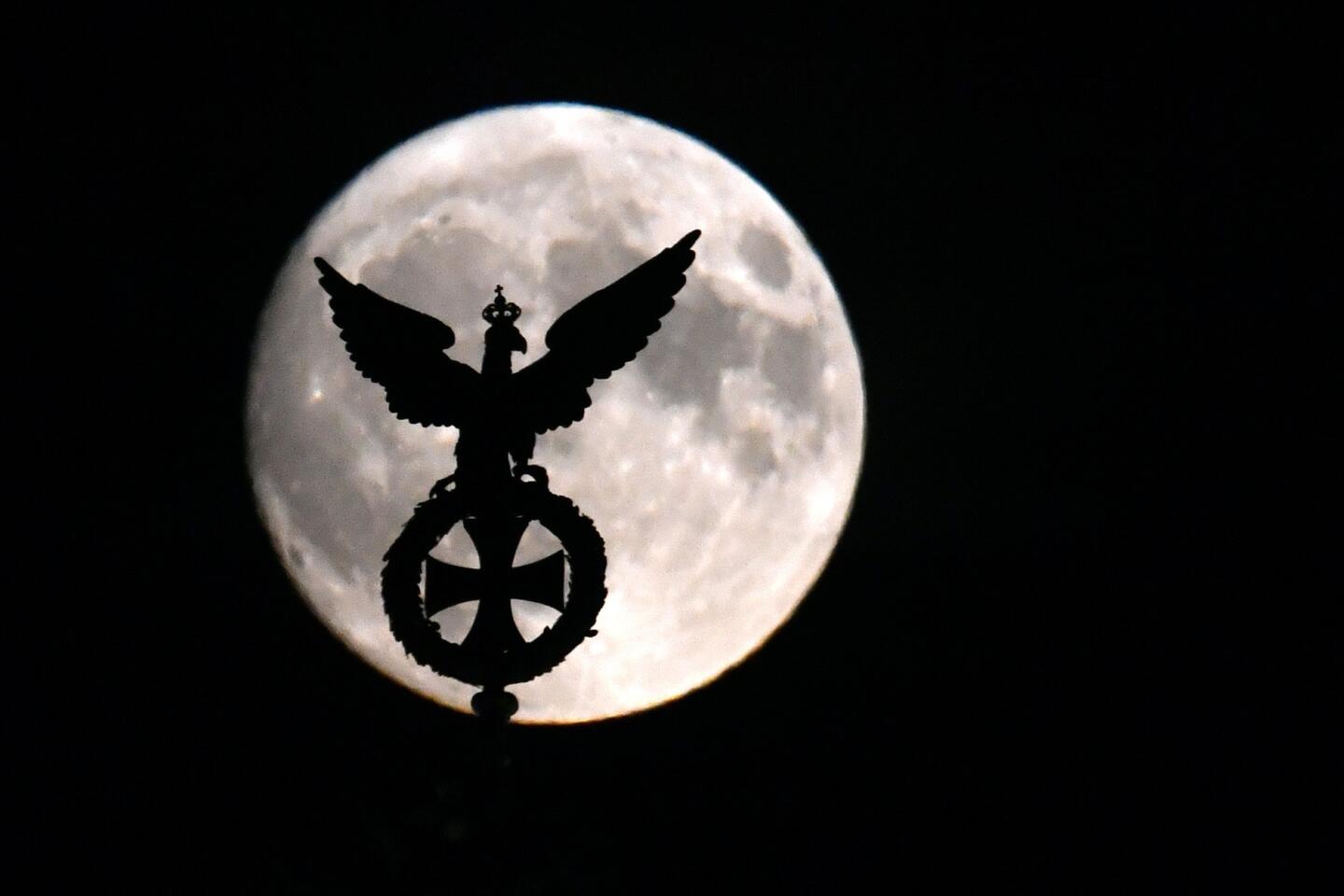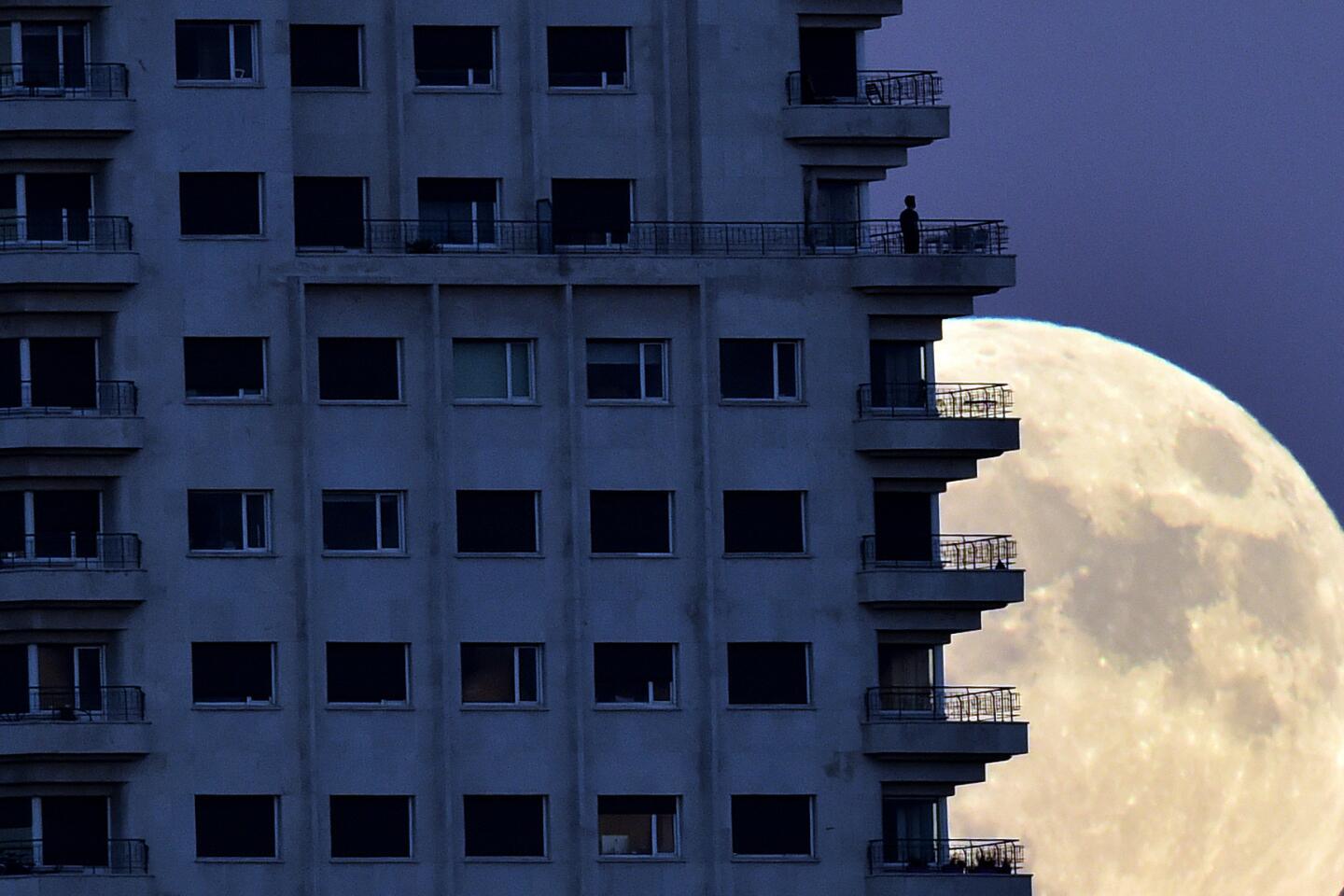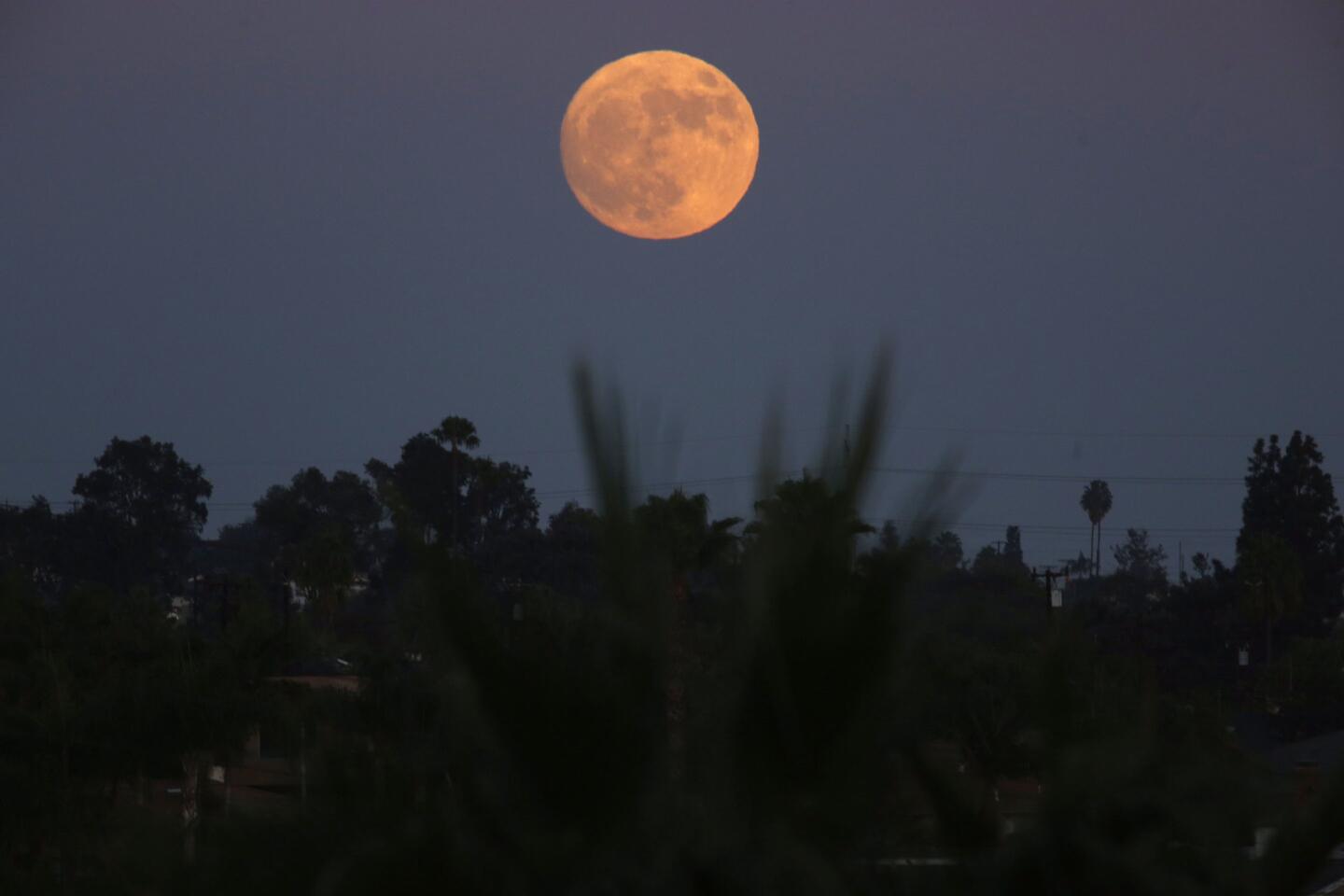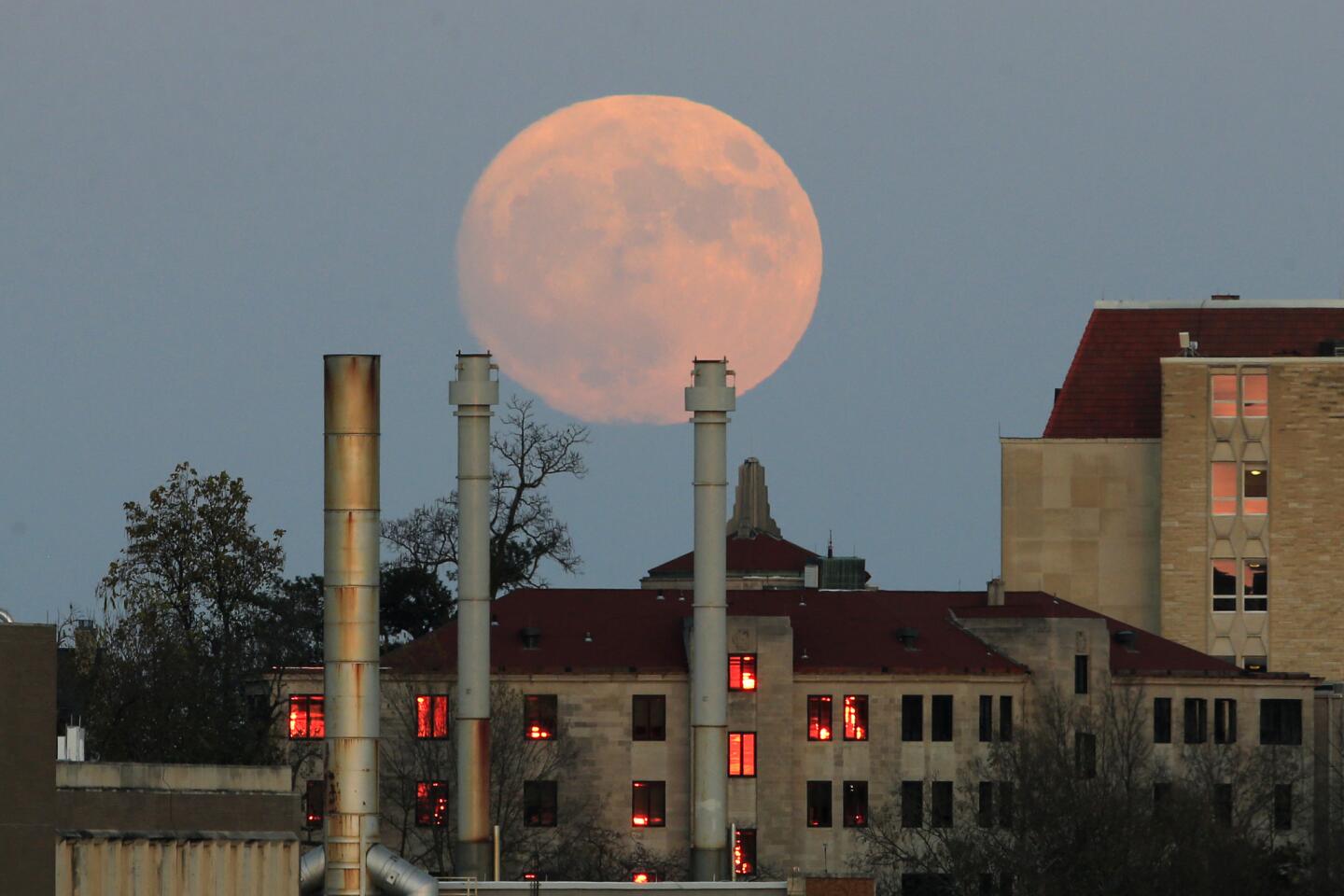An extra-super supermoon is rising this evening, and you don’t want to miss it.
Tonight’s full moon will appear bigger and brighter in the night sky than it has in nearly 70 years, and all you have to do to witness its shining glory is look up.
“Supermoon” is a non-technical term for a moon that turns full at the same time it hits perigee — the point on its orbit when it is closest to Earth. The moon’s path around our planet is shaped more like an oval than a circle, so there are times when it is closer to us (perigee) and times when it is farther away (apogee).
Supermoons occur about once every 14 months on average. However, Sunday night’s supermoon is extra super because the moon will be even closer to Earth than usual.
At its closest approach, the moon will be 221,524 miles from our planet, compared with an average distance of 238,900 miles.
1/20
The moon fills the sky in Marseille, France.
(Boris Horvat / AFP / Getty Images) 2/20
The moon hangs in the background as an illuminated wooden boat makes its way down the Tonlé Sap river for a race in front of the Royal Palace in Phnom Penh, Cambodia.
(Heng Sinith / Associated Press) 3/20
A full moon illuminates Rome’s skyline.
(Alessandro Di Meo / Associated Press) 4/20
Statues on the Almudena Cathedral are silhouetted against a supermoon in Madrid, Spain.
(Gerard Julien / AFP / Getty Images) 5/20
The supermoon beams above the Port of Los Angeles in San Pedro.
(Bob Chamberlin / Los Angeles Times) 6/20
A nearly full moon rises above the Valley of the Gods near Mexican Hat, Utah. November will see the largest full moon since 1948, also known as the ‘supermoon,’ when the moon reaches its closest point to Earth.
(JIM LO SCALZO / EPA) 7/20
A commerical jet flies in front of the moon on its approach to Heathrow airport in London.
(ADRIAN DENNIS / AFP/Getty Images) 8/20
The supermoon is seen behind the Soyuz MS-03 spacecraft set on the launch pad at the Russian-leased Baikonur cosmodrome in Kazakhstan.
(KIRILL KUDRYAVTSEV / AFP/Getty Images) 9/20
The moon rises beyond the Arch in St. Louis as seen from the Compton Hill Water Tower.
(David Carson / Associated Press) 10/20
The moon rises behind a neon sign in Sacramento.
(Rich Pedroncelli / Associated Press) 11/20
An American Airlines passenger plane passes in front of the moon, as seen from Whittier.
(Nick Ut / Associated Press) 12/20
View of the church of Our Lady of Conception, with the moon during the brighter full moon phenomenon, when the moon will be closest to the earth since the past 70 years, in Vila Pouca de Aguiar, Northern of Portugal.
(Pedro Sarmento Costa / EPA) 13/20
The moon rises behind the castle of Almodovar in Cordoba, southern Spain.
(Miguel Morenatti / Associated Press) 14/20
A nearly full moon rises over a grave marker in a cemetery in Wilmette, Ill.
(Tannen Maury / EPA) 15/20
The moon rises beyond flags atop Fraser Hall on the University of Kansas campus in Lawrence, Kan.
(Orlin Wagner / Associated Press) 16/20
The moon is seen in its waxing gibbous stage behind the head of the Christopher Columbus statue at Columbus Circle in New York.
(Julio Cortez / Associated Press) 17/20
The moon is seen behind the Prussian eagle on top of the Brandenburg Gate in Berlin.
(Ralf Hirschbeger / AFP / Getty Images) 18/20
A man stands on a balcony of a building of Madrid as the moon rises in background,
(Gerard Julien / AFP / Getty Images) 19/20
An extra-super super moon rises over El Segundo early Sunday evening. Tonight’s full moon appears bigger and brighter in the night sky than it has in nearly 70 years.
(Genaro Molina / Los Angeles Times) 20/20
The moon rises beyond the University of Kansas campus in Lawrence, Kan.
(Orlin Wagner / Associated Press) The last time the moon sailed this close to Earth was on Jan. 26, 1948, when it came 30 miles closer. The next time won’t be until Nov. 24, 2034, when the distance between the two bodies will be 40 miles less.
Why does the distance between the Earth and the moon fluctuate so much?
As Bob King explained in Sky & Telescope, the shape of the moon’s orbit varies due to the ever-changing distances and relative position of the sun, moon and Earth. Thanks to variations in these gravitational forces, the moon’s orbit is sometimes more oval shaped, and other times more like a circle.
“When more oval, the Moon’s perigee point gets unusually close to Earth, and if a full Moon arrives at that point, it will be considerably closer to us than during those times when the lunar orbit more closely resembles a circle,” King wrote.
Astronomers warn that some skywatchers may be disappointed by this particular lunar show. At its closest (3:23 a.m. Monday morning) the lunar disk will appear 7% larger across, and 16% brighter than an average moon. Many people will not notice a difference, they warn.
But I say — don’t underestimate the power of suggestion. If you take a minute to gaze upon our glowing, gorgeous moon, and remember that it is closer to us right now than it has been in more than half a century, I bet you anything it will look a little more special and super than usual.
[email protected]
Do you love science? I do! Follow me @DeborahNetburn and “like” Los Angeles Times Science & Health on Facebook.
MORE IN SCIENCE
Climate change is real: Just ask the Pentagon
Dinosaurs and their ancestors lived side by side, fossils show
Why are we ticklish? Scientists who tickled rats offer an intriguing answer

